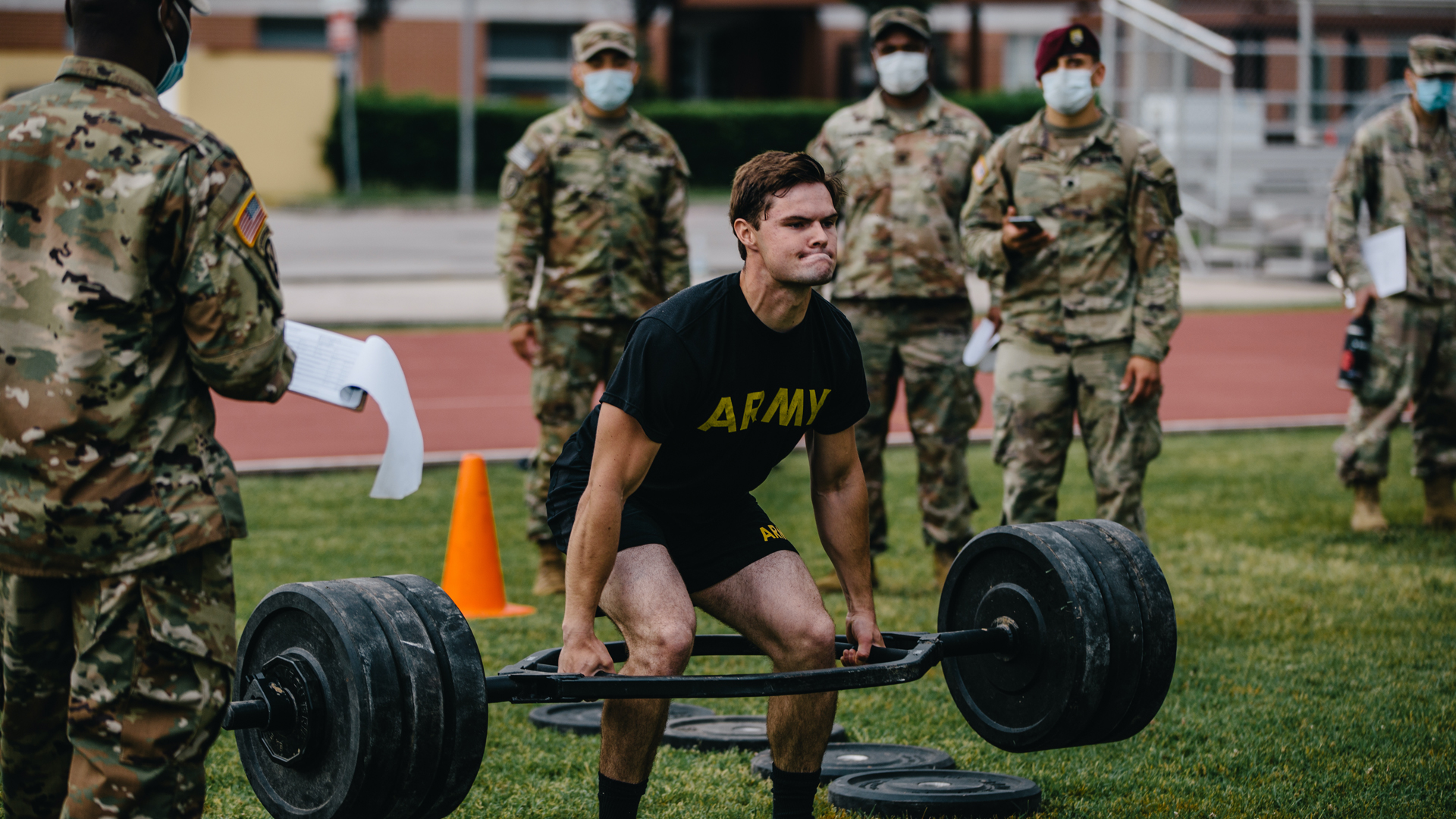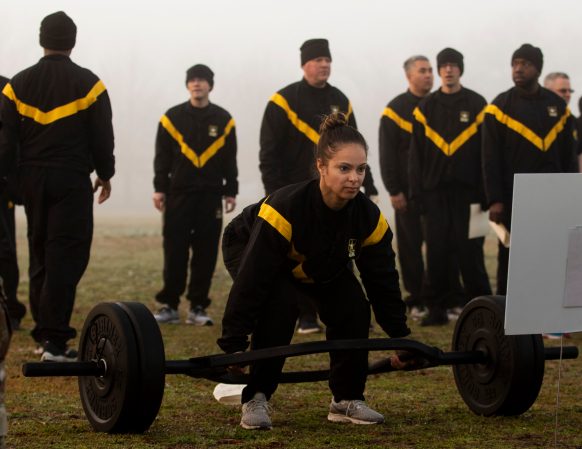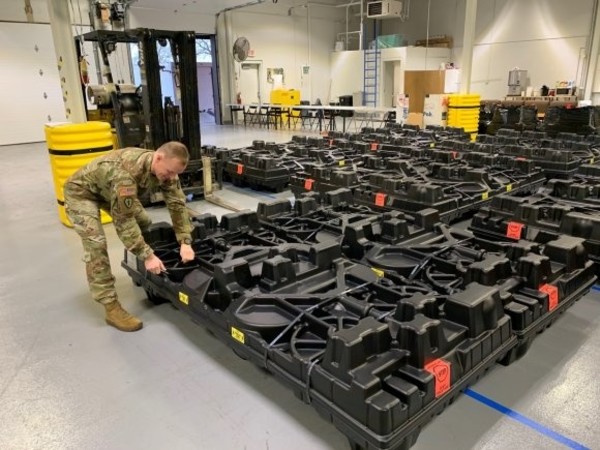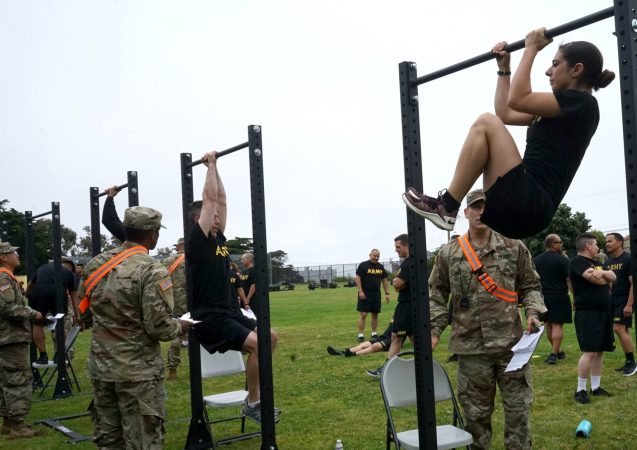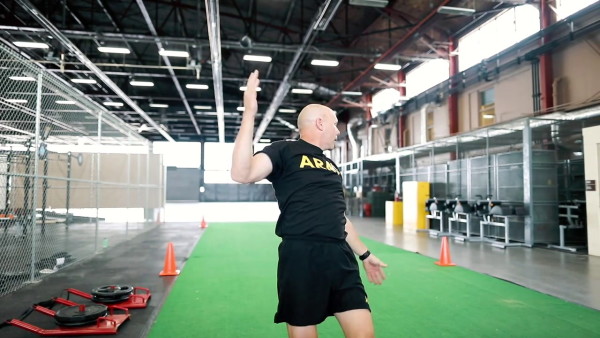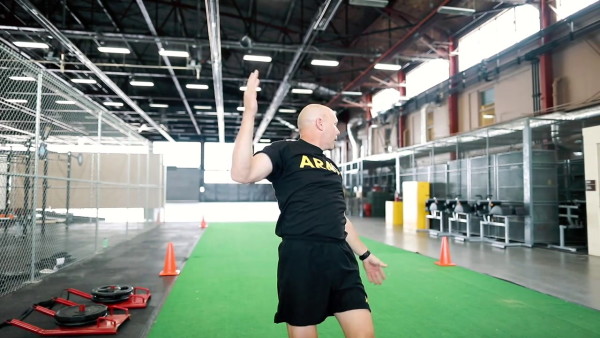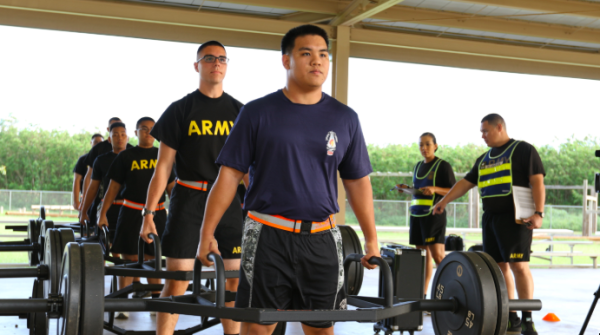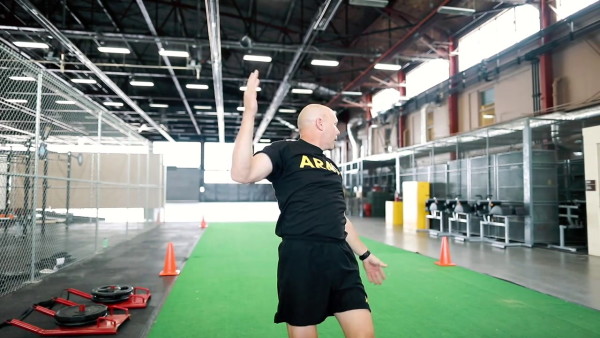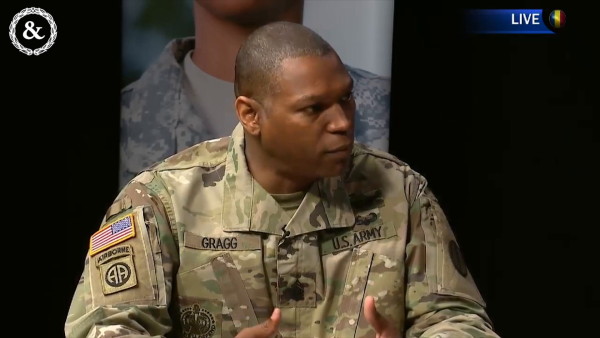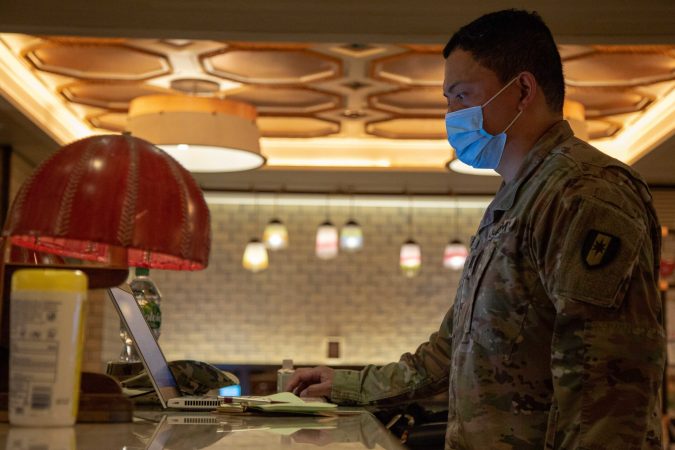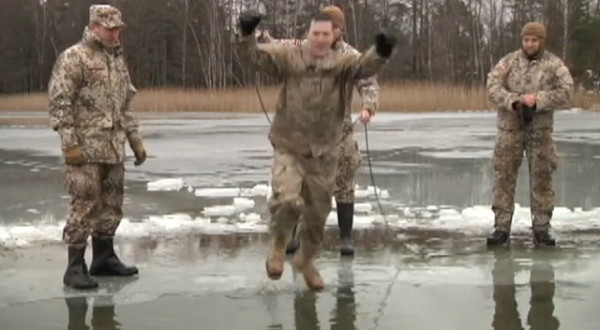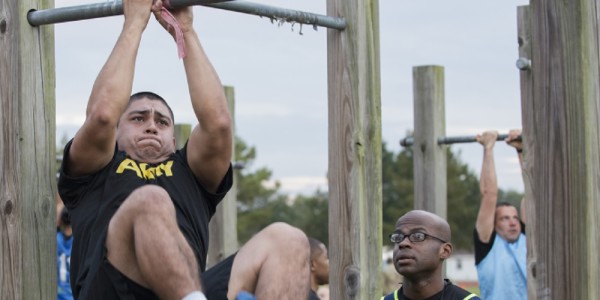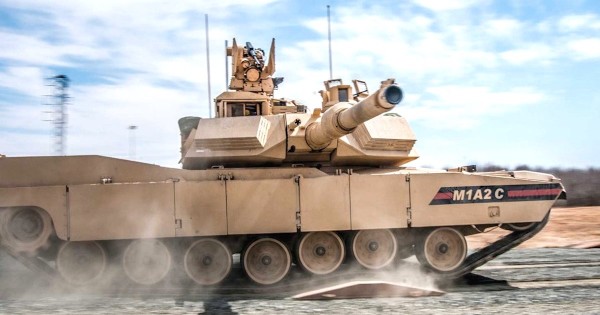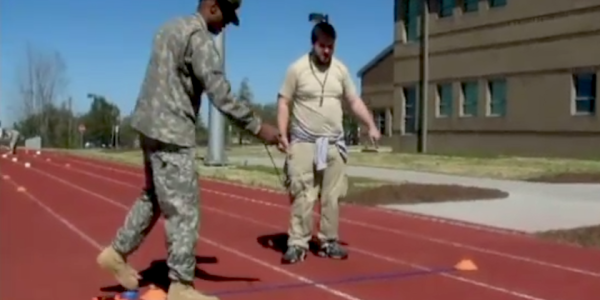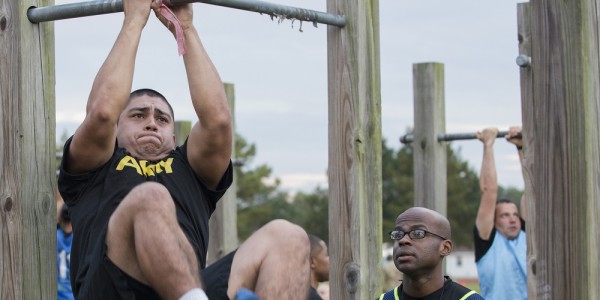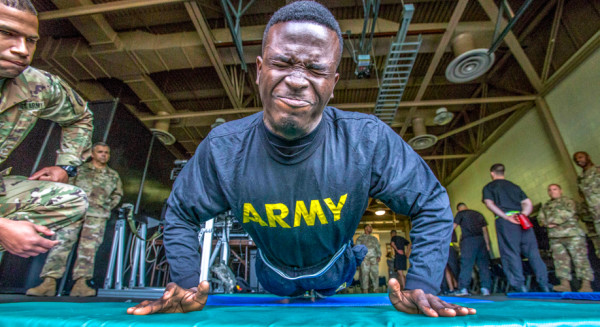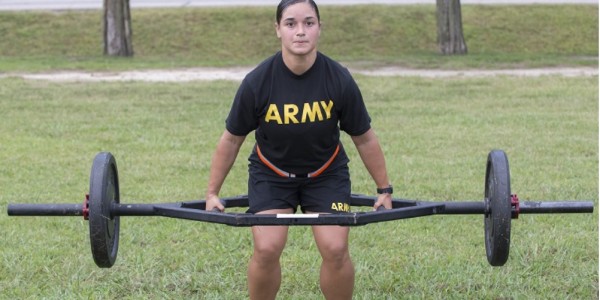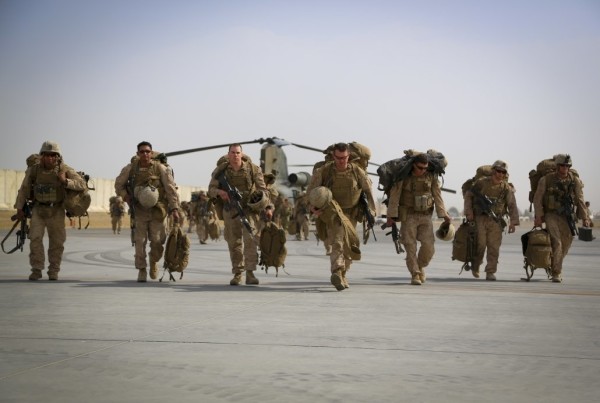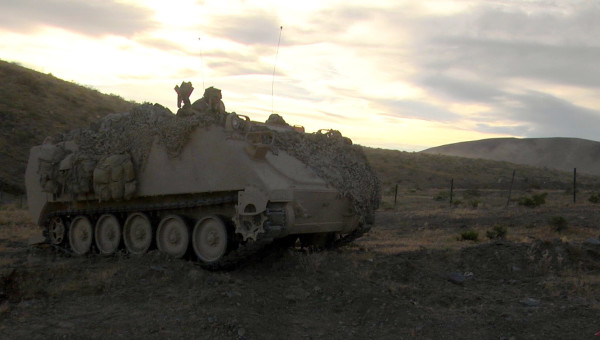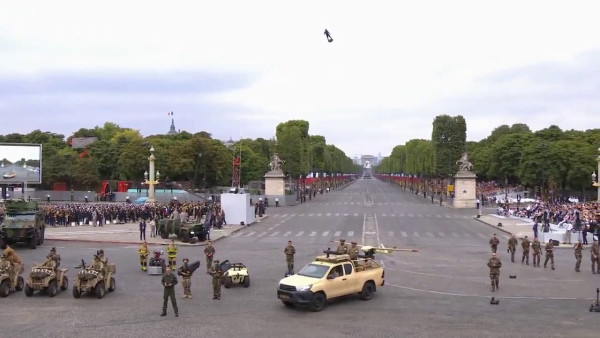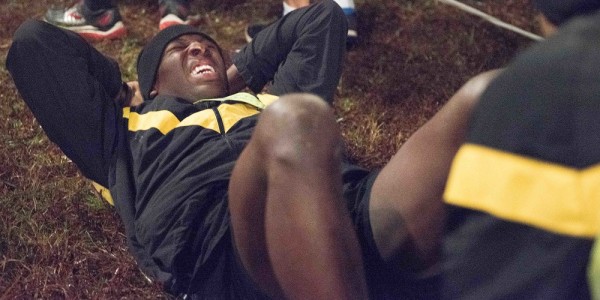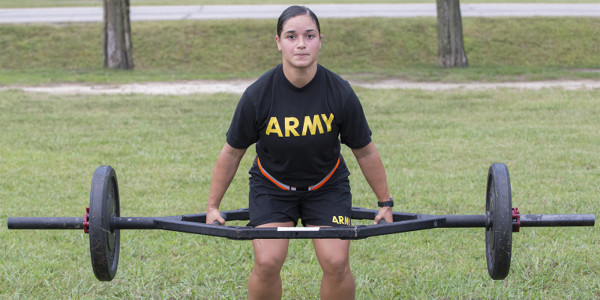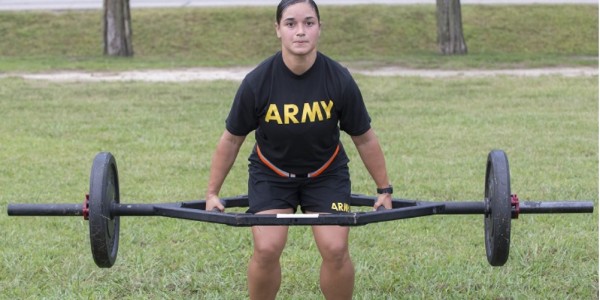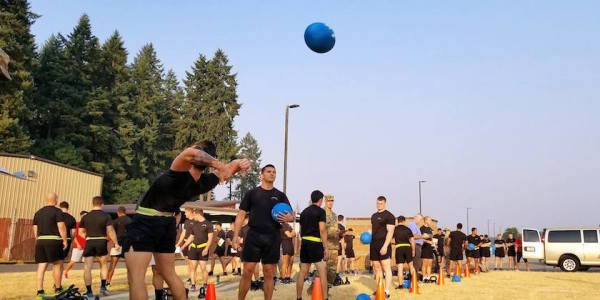As the Army moves forward with its revised fitness test, it still has work to do on how soldiers are trained and equipped to pass it.
A study by the RAND Corporation released on Wednesday said that proper training is key to success on the Army Combat Fitness Test while praising the service’s holistic health and fitness (H2F) initiative which is completely changing how soldiers train. But Rand noted that “greater effort is needed” from the Army to better understand and design training for soldiers to meet the standards of the test, which was first introduced to soldiers in 2017.
Dr. Chaitra Hardison, the lead author of the RAND study, told reporters on Monday that the Army needs to take “steps to further support training improvements,” which includes making sure soldiers have access to ACFT equipment.
“The Army has instituted some training and provided access to equipment for many soldiers already,” the RAND report says, “but the Army should also continue making improvements to training and equipment access to realize the benefits as quickly as possible.”

Subscribe to Task & Purpose Today. Get the latest in military news, entertainment, and gear in your inbox daily.
Through their study, RAND held focus group discussions with soldiers and talked with leaders and Army fitness experts. One of their first takeaways from the conversations was that soldiers found individual training to be more beneficial than unit training, which “often focuses on running or other exercises that are easy to perform in a group.” And, the RAND study said, even when a unit focuses on strength training, it can be time-consuming to set up equipment for soldiers of different fitness levels.
Instead, soldiers said the Army’s new holistic health and fitness (H2F) program is better suited to their needs, since it tailors a training plan to a soldier’s abilities instead of having every soldier do the same thing. Aside from improving how soldiers exercise, the H2F program also urges soldiers to get enough sleep, eat well, and improve their spiritual and mental wellness. The program is still being rolled out by the Army and isn’t yet available at all units, but soldiers gain access to personal trainers, physical therapists, and nutritionists to improve their training. For example, the H2F training facility for one brigade at Fort Bragg, North Carolina, included civilian strength coaches and trainers who were available to soldiers working out in the facility.
Individualized training was also suggested by RAND in the form of “event-specific training bands,” in which soldiers would receive training “tailored to their individual needs” to help them pass whichever event they’re focusing on. It would be a “more supportive approach” to assign soldiers to a training band instead of putting a flag in their file, which is “essentially a derogatory mark on a soldier’s record,” the report says.
“Instead, the Army could approach failures on the fitness test as a training issue: Those who are failing would be identified as in need of training and assistance as opposed to soldiers who are in violation of required physical fitness policies,” the report said. “This change in tone sends a very different message.”
The importance of having people who are experts in weightlifting is also paramount to prevent injuries, which is something soldiers also mentioned to RAND during the study. Participants in RAND’s focus groups “expressed concerns about soldiers using improper form while training or pushing (or being pushed) too quickly to improve,” the report said.

“Because of these concerns,” the report said, “multiple participants expressed a desire for a new occupational specialty of professional physical trainers to coach units and individuals, similar to H2F … but with deeper expertise on ACFT training and proper form to prevent injury.”
In fact, the ACFT has already started helping the Army change its approach to fitness. The report pointed out that despite the test not yet being fully implemented, it has “changed soldiers’ fitness behaviors … and improved specific and overall fitness levels because of sustained fitness training.”
Another notable finding within the RAND report is one many soldiers have known for years now: Those in the Guard and Reserve have specific concerns about accessing equipment to train for the test. One female Army officer told Task & Purpose last year that soldiers “don’t feel supported” with the ACFT, because “most of us can’t even get access to the equipment to train on.”
“When I see a specialist or a single mom trying to buy equipment because they’re afraid they’re going to lose their career — I have a problem with that,” an Army official said.
Indeed, the RAND report said Guard and Reserve soldiers are “often not colocated with an Army base and therefore do not have the same access to training equipment” as the regular Army. And as a result, “some reservists were paying out of pocket,” either for a gym membership or equipment to train at home if they aren’t near a gym. There was also concern among those soldiers who are also in apartments, and therefore have limited space to exercise at home and practice things like the sprint-drag-carry or standing power throw.

In order to address the concerns raised in RAND’s report, Brig. Gen. John Kline, commander of the Army’s Center for Initial Military Training, said Monday that the Army is “going to expand access to ACFT training equipment across all Army components” and has developed “a bunch of training plans” to help soldiers.
Kline said 40,000 sets of ACFT equipment have been sent out to the force but also said most of the preparation for the test and “functional fitness in general” can happen without equipment.
“There’s a set of equipment out there for every 25 soldiers across all the [components] to do the actual test with,” he said. “But one thing we probably didn’t communicate very well early on was, if you are for example in the National Guard or Reserve and you’re not next to one of these large active duty training bases, there’s some coordination that probably needs to be done to go to any one of the ROTC detachments that are out there or the 1,400 recruiting stations that are out there, all of which were fielded with that equipment.”
Kline also said that the Center for Initial Military Training is expecting to double the number of people who graduate from its four-week master fitness trainer course, from 830 trainers a year to over 1,600 a year.

To continue to oversee how the ACFT is implemented and improved upon, RAND recommended that the Army create a new “executive structure” run by the Sgt. Maj. of the Army and Under Secretary of the Army. The new entity will be made up of general officers and senior civilians, RAND’s report says, and will manage any future changes or implementations of the test, including the service’s training.
“Ensuring training and equipment access for all will need to be a continued process,” the report says, “that is refined and improved over time.”
What’s new on Task & Purpose
- Army Special Forces team takes part in legendary race through the Nevada desert
- ‘A catastrophic kill’ — Experts break down armored combat seen through the sights of a Ukrainian vehicle
- Why the skies over Ukraine have proven so deadly for Russian pilots
- Legion of the damned: Inside Ukraine’s army of misfits, veterans, and war tourists in the fight against Russia
- Woman accused of stolen valor charged with defrauding $250,000 from veteran charities
Want to write for Task & Purpose? Click here. Or check out the latest stories on our homepage.

